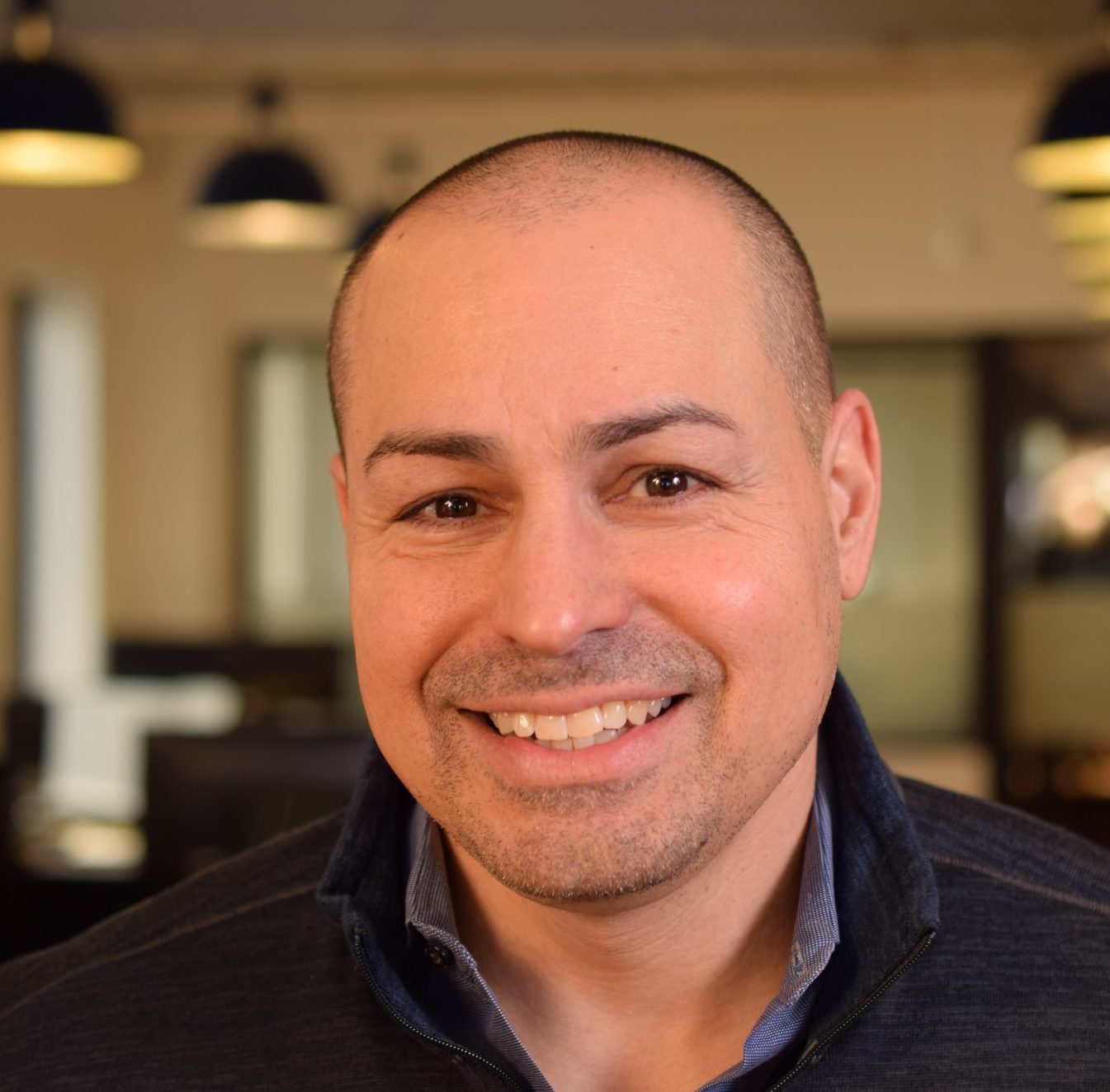Is your team feeling stuck? In a rut? It may be because they have stalled out in their learning curve. Time to kick things up. Whitney Johnson talks about innovation, entitlement, and how to get things moving again.
Hi, Neil. Happy to be here.
Very happy to have you on. Why don’t you start off telling the audience a little bit about yourself?
That is such a loaded question. So, a little bit about myself. I live in Virginia and we moved here a few years ago. Although, I grew up in what is now Silicon Valley. My background is I studied music in college and so you’re thinking, “Well, why are you talking to us about stagnant teams?” And that’s because I disrupted myself and basically after college my husband and I moved to New York so he could get his PhD in microbiology. We got there and I realized, oh, I guess someone needs to put food on the table. I think that person’s going to be me. And I discovered this exciting, wonderful thing called Wall Street. And so, my career, I started out as a secretary working on Wall Street but then was able to move into investment banking, which rarely happens. Again, another disruption.
And from investment banking I went into equity research and I was an award winning equity analyst for about eight years covering stocks in Latin America, telecom and media, then disrupted myself again. Well, actually, during that time, we had two children and then I left Wall Street to become an entrepreneur. Eventually connected with Clayton Christensen at the Harvard Business School and he wrote a book called “The Innovator’s Dilemma,” and really is the person who coined that term disruptive innovation. So I consider him the father of that. And then I ended up co-founding that investment firm with him and we invested in disruptive stocks. And during that time, I had this big “a-ha” that this whole theory of disruption wasn’t just about products and services. That it also was about people and this S curve that we were using to help us gauge how quickly an innovation would be adopted could also help us understand people, how we learn, how we grow, how we change.
And so, in 2012, I sold my stake in that firm and have been chasing this idea down ever since. And so, now, I have the distinct pleasure and privilege of getting in to talk to companies throughout the world about… high growth organizations throughout the world how to create high growth individuals and you do that through this framework of a personal destruction, that S curve of learning framework. So, that’s what I do and it’s absolutely a complete and total ball.
Wow. Nicely done summarizing all that. That’s a big story.
Thank you.
So, we’ll obviously talk about personal disruption a little bit but it may be a topic for another day that we get into. I want to start off with talking about stagnant teams. A lot of people out there who may be listening feel like maybe their team is stagnant or they’re not sure if they are, if they just have different expectations. So, what are the symptoms of a stagnant team?
So, one really big symptom is when you have too many people at the high end of their learning curve and so let me explain. I alluded to this just a moment ago but every single person’s on a learning curve. It’s shaped like an S so if in your mind you want to just like picture this S, it looks like a wave or a roller coaster. And at the bottom of the S, people are brand new in their role. They haven’t done it much and so they’re figuring things out. They’re kind of slow. They might get a little bit disappointed but there’s a lot that they know that they need to learn. Then you’ve got that steep part of the learning curve that you move into after applying yourself where you become increasingly competent and confident and with that comes engagement and all your neurons are firing where you know enough but not too much.
And then there’s the top of the curve where you start saying, “Okay, I figured it out. Things are becoming easy.” But because your brain is no longer emitting these feel good chemicals, that dopamine, then you start to get bored. And so, what happens is when you have people at the top of the curve, they’re either going to leave or they’re going to stay, and because they’re not learning, they get somewhat complacent. And so, one of the symptoms of a stagnant team is if you look at your people on your team any you’ve got too many people at the high end, think about like this S or almost like a teeter totter or a seesaw. Those too many people at the high end are going to tip that curve over because they’re not learning and so that is a symptom that you’ve got a stagnant organization or team.
So, you looking out on all the people that are a part of your team and you feel like you have too many people at the top that are just kind of like not really sure where they should be going. So, what are some ways to get momentum again if you recognize that this is a big symptom you have?
Yeah. So, it depends. So, it depends on… so you’ve got too many people at the high end. Why do you have too many people at the high end? Because sometimes it’s because you as a manager or a leader say, “Okay. You know what? I’ve worked really hard to develop this person. I’ve given them these opportunities to learn. They’re now at the top of that curve. I like them right where they are where they do me the most good. I don’t want them to jump to a brand new learning curve.” So, one way that you can do this is say, okay, I’ve got this person here and they’re really good, and stop deluding ourselves thinking, well, they’ll just stay there forever. We kind of have this idea of our one true employee. We hire them and they’re going to work for us forever. They’re going to stay in the same role and they’re going to be super, super happy in that place. And if you can say to yourself as a manager or a leader, “Okay. I’ve got this person. They’re at the top of the curve. They’ve got all this latent innovative capacity if I will let them do something new.”
And so, part of it is overcoming our own entitlement as a leader or a manager, understanding that there is a shelf life. So, that’s if you, the manager, don’t want them to jump. On the other hand, if you’ve got people who are at the top of that learning curve and they don’t want to jump on, the starting point is just to have a conversation and to walk them through this idea of the learning curve that your neurons aren’t firing. You’re getting bored. You’ve got this latent capacity. If you stay here, this plateau is going to become a precipice. Your value’s going to erode. So, and I don’t want that to happen and you don’t want that to happen. And so, here’s some options that we have for you.
One is we can have you stretch or jump in place. You don’t have to jump to a new curve. You can just jump in place either by getting a coach or really focusing on diving deeper on the industry or how to be a better leader. We can have you start really mentoring and having people apprentice with you so that you are developing people because we all know that teaching people how to do something is very different than doing something and it’s a skill in and of itself.
The other thing is we can give people a stretch assignment right where they are. And then the fourth option is to give them the opportunity to jump and to you make it safe for them to jump because most often when people don’t jump, we say, “Oh, they’re lazy. Oh, whatever.” But almost always it’s because they’re scared. They’re scared of the, you know, that uncertainty that comes with trying something new because what if they try something new and it doesn’t quite work the way they had hoped. And so, those are some options.
If it’s you that’s preventing them, then you’ve got to think about, “All right. Well, they’re going to leave so I can either help them jump and be their hero or I can hold them back and be the villain.” And then if they don’t and if it’s them that doesn’t want to jump then you can either you can have that conversation and then give them a stretch assignment, talk to them about mentoring, and even encourage them to jump to something new.
So, when you look back on your own career, it seems like you made a lot of those jumps, like a big jump either across an industry or across a vertical or something like that. Have there been times when you’ve experienced all these in your own life, too?
Such a great question. Love it, Neil. Okay. So, I would say, yeah, let’s walk through it really quickly. So, when I left college and went to New York as a music major, that was a big jump to do something brand new on Wall Street and that was something that I did on my own, but there was a sense of expediency, right? We need food on the table. I would say once I got… when I was in banking and I moved into equity research, that was a time when I actually got pushed off the learning curve because I was on this curve, I was in banking moving along and our bank was acquired. There was a shake up.
My boss was fired and I think they would have fired me, too, or let me go but I had high reviews and I happened to be pregnant. So, the combination of those two, they were, like, “We can’t let her go,” so they just shoved me into equity research. And so I was pushed, but the interesting part of that, and I think this happens often times for people, is that becoming an equity analyst was much better suited to who I am and my skill sets and so that step back became a sling shot for me.
Another time where I actually jumped was when I had been an equity analyst for about eight years and really felt like I knew what I was doing. I was at the top of my curve, top of my game, and I go to my boss and I say, “Hey, you know, I’d like to try something new. I’d like to move to a new learning curve,” and I got the old “we like you right where you are”. And so, you know, at this point, I’ve read “The Innovator’s Dilemma” by Clayton Christensen. I understand, “Oh, yeah, this applies…” Or no, I don’t understand. I had this kernel of an idea that this could apply to me, too, and so, you know, to move forward, I’m going to have to take a step back. And so, within a year, I disrupted myself. So, yeah, I mean, I can give you more examples but I think that’s probably enough as a starting place.
Yeah. No, that’s great. I want to come back to a topic you threw out there about the entitlement that managers feel, especially when it comes to employees that, okay, this is somebody’s going to be with me for a long time. I’m expecting them to always be on my team. Talk more about what it looks like for managers to feel entitled about their employees.
Yeah. So, I think what happens is that, you know, if you hire someone, and especially if you’ve hired someone and you’ve kind of given them a shot and you’ve given them opportunities and you’ve trained them, you’ve given them this spotlight, there really is this feeling, like, I made you. I made you. And so, there’s part of that. That can happen. Well, not always but that can play into it. I think there’s this other piece of it, it’s just human nature that as we ourselves move up a learning curve and we have our team, you know, revenue is expanding and margins are expanding and everything’s just working.
There is this human tendency to say, you know, this is the way things will and should always be and so we just expect that it should stay that way, and including that the people who work for us should want to stay right where they are because that will make our lives easier. So, that’s where that entitlement starts to kick in is that we, you know, the more successful we are the more we think we deserve our success and we start to preference or privilege how we feel and what we want over how other people feel what they want and that at its core is our being entitled.
So, as a manager leading the team, when you’re looking out on all the rules you need to fill, do you constantly need to see this pipeline that’s going through where, “I have these rules and I’m always creating new ones. I’m always looking for new people to fill these roles,” rather than saying, you know, “I got these three people and individuals who are on my team.” Is it more important to think in terms of that way or should you still think about individuals?
Oh, it’s a both/and. So, there are a couple of things you want to do. So, for example, for anybody who’s listening to this right now, one of the things you can do is you can draw out this S and you can say, “All right. So, let’s see. Where am I on my learning curve in my current role? Am I might at the top? Am I in the middle? At the bottom?” Because depending on where you are, you’re going to manage yourself and manage the people who work for you differently. So, where are you personally on your own learning curve and are you happy there? That’s the first question I would ask.
Then, the second thing you can do is, alright, so think about the people on your team right now. Where are they? So, you want to think about their individuals on your team so if you’ve got a person who’s at the low end of the curve, what do they need? That person is going to be slower than you might want them to be, and because of their inexperience, they can ask questions, like, “why do we do it like this?” that can help you innovate.
So, part of what you need to do to manage that person at the low end of the curve is to, number one, be patient, and number two, make sure you’re facilitating the learning and the training that they need in order to move into the sweet spot of their learning curve. And you would do something similar with the people on the steep part and at the high end of the curve. That’s the individuals.
Then, you also can look at this as a portfolio to build a high performing team. What we found in our research is that at any given time, you want to have about 70% of the people on your team in the sweet spot where they know enough but not too much. Things are hard but not too hard. And therefore, they’re capable of really innovating and stretching. And then, you, at any given time, want 15% of your people at the low end of that learning curve where they’re asking those questions, like, “why do we do it like this?” and you’re also building your pipeline.
And then you want 15% of your people at the high end of the learning curve where yes they are getting a bit bored and you’re going to have to figure out what to do with them. But they also are the tribal memory. They also are the people who are capable, if they will, help bring others up along the curb as well is to give people something to bump up against of, like, “Here’s how we did historically. All right. What could we do? How could we try things differently?”
So, you look at people as an individual, what learning curve are they on, how do you taylor this so that they can be successful, and when it’s time, jump to new learning curve but you also look at it as a portfolio. If you’re trying to build a high performing team, if you’re trying to be innovative, if you’re trying to lower your disruption score, you want to optimize the percentages that you have of people on there on their various learning curves.
Yeah. Now, we’ve been talking about stagnation mostly in terms of individuals feeling like, “Okay. I’ve reached a limit or I’ve reached kind of a leveling off on that S curve.” Is it possible that an entire team could feel stagnant or is that always going to come back on somebody in leadership on that team is in a stagnant position?
Yeah. So, because of my premise is that the fundamental unit of disruption or change as the individual, if you’re looking at a team and if you’re finding that the team is stagnant it’s almost always going to come back to the individuals on your team. Because think about it. If you’ve got a team and you’ve got, you know, a team of ten people and seven people were at the low end of their learning curve, that is not a stagnant team. You’ve got challenges. You’ve got to figure out how you’re going to get them up that learning curve. But that is not a team that is stagnant. And so, you always come back to that building block of the individuals on the team.
Your book’s called “Build an A-Team” and I think usually when we think about an A-team, we’re thinking about a group of all stars that all come together and do something great. Is that the correct idea or is it a lot more nuanced than that?
It’s more nuanced. I mean, it depends. It really depends on what your definition of all stars is, but if we operate under the promise that everyone’s on a learning curve and if you can get them on the right learning curve and manage them on the basis of where they are then I would argue that everyone is a high performer. They have different roles and different things, functional roles that they need to accomplish within the context of your team, but if people are learning and really, they’re going to be a high performer regardless of the role that they have. There are going to be some roles that, of course, are going to matter more to the bottom line over all and I suppose that’s where you get into that typical category of superstars, but I really would argue that everybody on your team can be a high potential if you put them in a position where they can learn and be in that sweet spot of learning for them as individuals.
Well, let’s take the example of somebody’s looking out and they see one person on their team just seems very disengaged, whether they’re on that high point of the S curve or they just have kind of felt like they’re not happy with it. What’s the difference between someone who’s disengaged and someone who just doesn’t care about work and is just not really into what’s going on?
Yeah. So, that’s such a good question. I remember a few years ago I was delivering a workshop to a group of CEOs and one of the CEOs said to me, “My people, 70% of the people in my team, they’re not on a learning curve,” and he was really frustrated and I could like sense that frustration, but the fact is is that it wasn’t true. It’s just that they were disengaged.
And so, I think there are some times, there are going to be some people who just don’t care. But I think more often than not, there are other things that are going on. One could be… because, again, everybody’s on a learning curve so then the question is what learning curve are they on? Can they even see that they’re on a learning curve? Can they see that the learning curve that they’re on matters to the team, that it matters to the organization, that what they do matter? And if for whatever reason they don’t care, I think more often than not, they feel like what they do actually doesn’t matter.
There are also times where they don’t care and so it turned out that this is just the wrong learning curve for them, working with in this organization, but they’re still on a learning curve, it just means that they’re not on the right… or this particular organization isn’t the right learning curve for them. Again, there are going to be exceptions but I really absolutely believe, and the research does demonstrate this, that we as human beings are wired to learn, that we want to not know how to do stuff, to figure out, to master it, to start all over again, to learn, leap, and repeat. And so, if people aren’t doing that, there’s something else going on.
So, let’s take the example of someone who’s building a new team, a fresh team, a new initiative that’s going out, they’ve hired several people to be on this team, how can they apply the principles that you’ve laid out in those early stages?
Okay. Love that question. So, one of the things you can do is, all right, so you say, “I know everybody’s on a learning curve. I know that I’ve got this team or I’m going to create this team and I know that I want to optimize by having 70% of my people in the sweet spot.” So, let’s say it’s a team of five people, right? So, three people in the sweet spot where they know enough but not too much. They really… they know how to do their job, but in hiring them, there’s enough that they don’t know how to do that this is going to be really interesting and engaging for them.
Then you want to have at least one person who really is pretty new with us so that they’re going to ask lots of questions and you want to encourage them to ask those questions so that over time they can also help innovate but also move into the sweet spot. It may mean that you’re going to have to get that person training outside of the organization in order to be able to develop and grow into the role and then you also want to have at least one person who’s at the high end who really is an expert.
And if for whatever reason, let’s say you’re in a really small, small organization, sometimes if you don’t have anybody on staff on your team that is at the high end of the curve that has a specific expertise, that’s where a consultant comes in. That’s where you hire a ringer and you bring someone in for three months or six months and say, “Okay. I’m hiring you to do this specific thing. I understand that you’re at the top of the curve. There wouldn’t be a lot of upside but I need you to do this specific thing and I want you to train this person at the low end of the curb. Or I want to bring you in for the six months to do this, but once you’ve trained people on how to do this then I’m going to allow you to jump to a brand new learning curve and so there will continue to be upside for you.”
So, that’s where I would start is looking at that three people in the middle, or 70% in the middle, 15% at the high and low end and just start crafting your team in that way. So, you’re getting diversity but you’re getting diversity in terms of from a learning curve perspective. That’s where I would start.
That’s a great perspective. I liked listening to that. Well, tell us a story about a team that you’ve encountered that really does this well and some unique aspects of them that not only do they maintain momentum but they keep it up, they avoid stagnation. What are some good stories you can share?
Yeah. So, one of the things that’s really exciting and interesting is that this idea of the learning curve, S curve of learning framework, we’ve found so people are like, well, who is interested in these ideas? Like, who ends up wanting to really work with you? And what we’re finding is that high growth organizations want to work with us because high growth organizations need high growth individuals and so they attract those individuals. They’re worried that they can’t quite keep up and that’s always a question, but at the same time, they believe and they want to make sure that the people can keep up.
So, let me tell you one fun story that happened not too long ago. So, we work with an organization called Western Governors University. It’s an online university. They’ve got over 100,000 students. They’re growing by like 20% per year and they’re really catering to people who went the traditional route in education and it didn’t work for whatever reason and so they’re now returning to school. Like 70% or 80% of their people are returning to school in this very nontraditional way. And so, one of the things that happened with this company is I coach the CEO, went in did this off site with all of their senior leadership. Super interesting. They’re all focused on helping the students grow and have this journey where they’re disrupting themselves. So, as you can imagine it’s attracting a lot of people who also want to disrupt themselves and are eager to move along that learning curve.
Well, one fun success story is they had a gentleman there, a chief marketing officer, who had been in the organization for about 15 years so very much at the top of the curve, done a very good job. But now, he’s like, “Okay. So, I’ve been doing this for awhile and I think it might be time for me to jump to a brand new learning curve. So, what do I do?” So, you know, if we talk about these ideas, well, there’s the obvious one that oftentimes happens is I’m at the top of the learning curve and people say, “Thank you very much,” and they kick you off the curve and you’re done. And they’re like, “Well, no. This guy is good.” He’s like, “I love this organization. I want to stay here. So, what do we do?” So, he and the CEO had a conversation. They’re like, “All right. Well, we’re growing 20% per year. We’re trying to disrupt traditional higher ed. We’ve got this whole new initiative that we want to take off that will help with college readiness. Would you be willing to jump to this brand new learning curve?” And he said yes.
And so, here, he’s in his late 50s, early 60s. And so, instead of him being bored because he’s done this for 15 years, he’s now jumped to the bottom of this new learning curve launching this entrepreneurial initiative of college readiness and he is by all reports doing this fantastic job. So, that’s what I mean when I say you’re at the top of a curve, you’ve got this latent innovative capacity. And instead of, you know, you sitting there saying, “Okay. I’m here. I’m bored. I’ll just ride it out,” and instead of management saying, “Oh, you know, they’re not… we need someone… we need to do something new. We’ll kick them off.” Instead saying, “All right. You’re amazing. You’ve been amazing. We want you to continue to be amazing. So, let’s have you jump to a new learning curve.” So, that’s what it can look like and it’s just super exciting for everyone involved.
Wow. Really exciting. All right. Last question. What was your music major?
I studied piano. So, I studied classical piano but then I got introduced to jazz and so I studied some jazz. And I just, yeah. So, the discipline of being a music major carries out in very interesting and unusual ways in my work now.
Very cool. Well, thanks so much for being on the show, Whitney. Why don’t you tell us where we can stay in touch with you?
Yeah. So, probably the easiest way is you can go to my website, whitneyjohnson.com. I have a podcast called Disrupt Yourself Podcast that you can listen to you and you can also sign up for my newsletter if you want. Just email me at [email protected] and we’ll sign you up.
Sounds great. Whitney, thanks so much for being on the show. I appreciated this episode. I learned a lot about disrupting yourself and how to build A-team. So, thanks so much and we look forward to talking with you again.
Neil, thank you for having me.
Whitney Johnson is the CEO of WLJ Advisors and one of the 50 leading business thinkers in the world as named by Thinkers50. She is an expert on helping high-growth organizations develop high-growth individuals. Whitney is an award-winning author, world-class keynote speaker, frequent lecturer for Harvard Business School’s Corporate Learning and an executive coach and advisor to CEOs. She is a popular contributor to the Harvard Business Review, has 1.7 million followers on LinkedIn, where she was selected as a Top Voice in 2018, and her course on Fundamentals of Entrepreneurship has been viewed more than 1 million times. In 2019, she was ranked #3 on the Global Gurus’ Top 30 Organizational Culture Professionals. In 2017, she was selected from more than 16,000 candidates as a “Top 15 Coach” by Dr. Marshall Goldsmith.
An innovation and disruption theorist, she is the author of the bestselling Build an “A” Team: Play To Their Strengths and Lead Them Up the Learning Curve, and the critically-acclaimed Disrupt Yourself: Putting the Power of Disruptive Innovation to Work. In these books, she codifies her frameworks for developing high-growth individuals and organizations – the Personal Disruption and the S Curve of Learning frameworks. Whitney was the cofounder of the Disruptive Innovation
Fund with Harvard Business School’s Clayton Christensen, through which they invested in and led the $8 million seed round for South Korea’s Coupang, currently valued at more than $9 billion. She was involved in fund formation, capital raising, and the development of the fund’s strategy.
As a former award-winning Wall Street stock analyst, Whitney understands momentum and growth. She was an Institutional Investor–ranked equity research analyst for eight consecutive years and was rated by StarMine as a superior stock picker. Whitney hosts the weekly Disrupt Yourself podcast, publishes a popular weekly newsletter, and she is married with two children.












